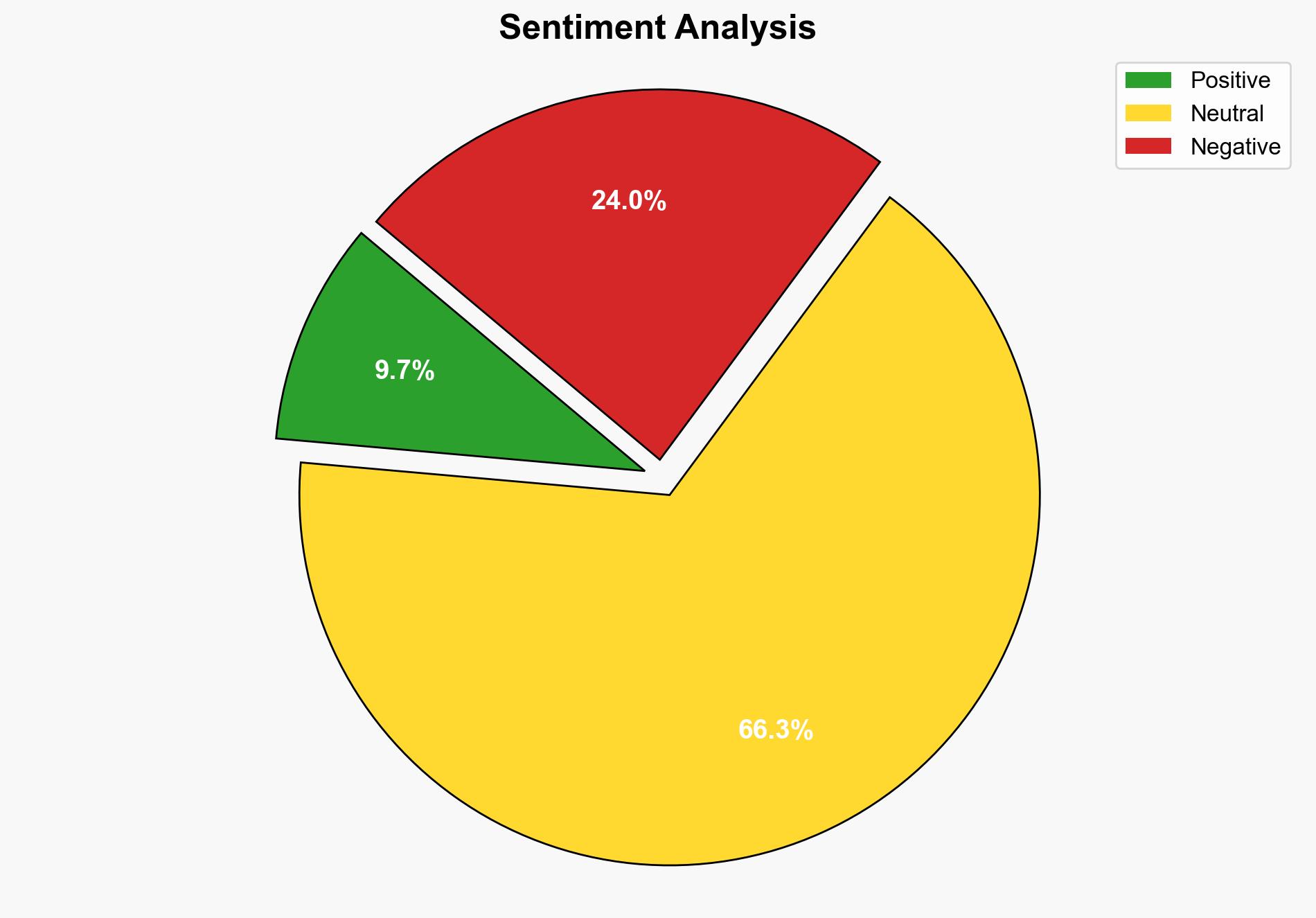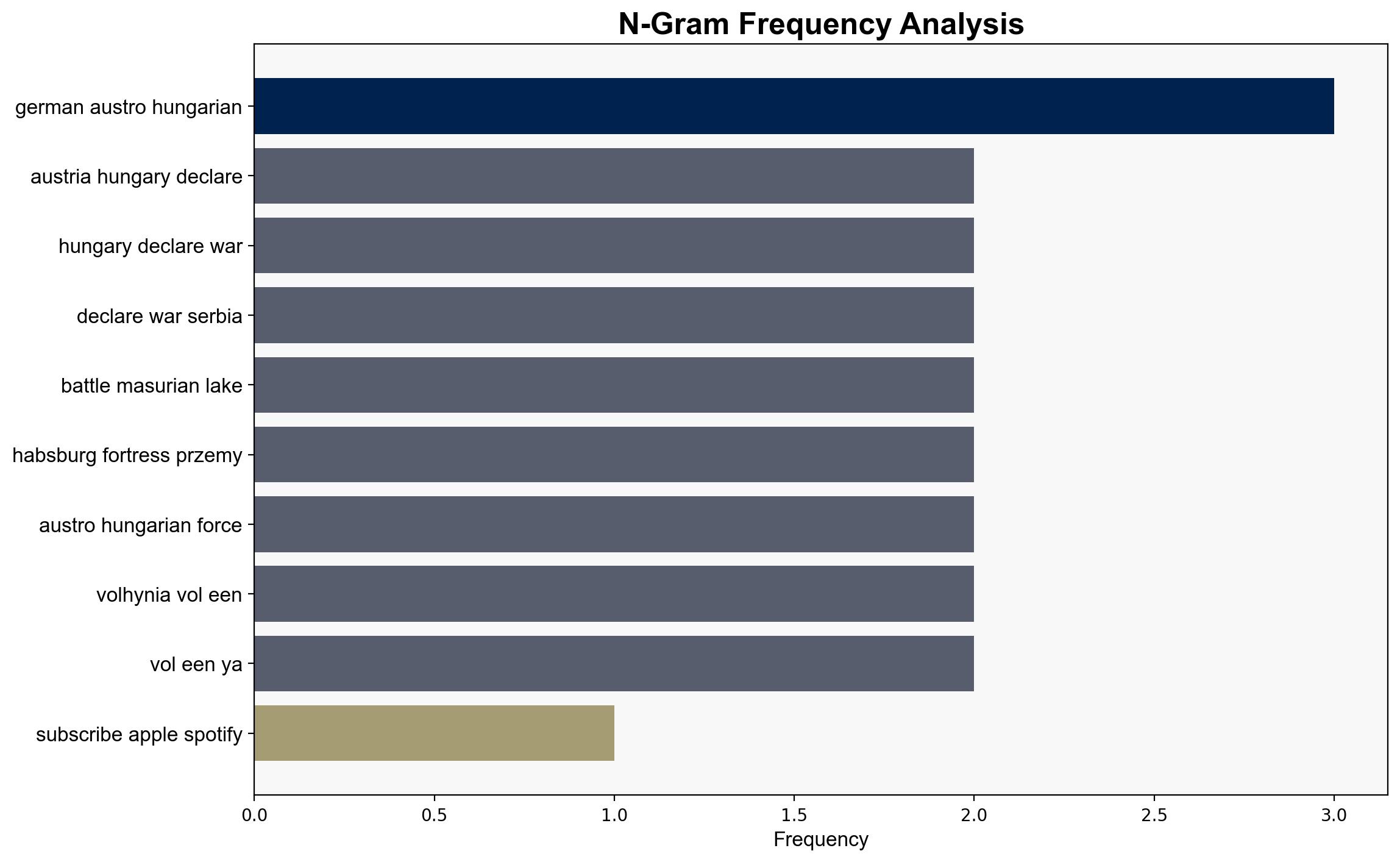The Eastern Front of World War I – Everything-everywhere.com
Published on: 2025-10-30
Intelligence Report: The Eastern Front of World War I – Everything-everywhere.com
1. BLUF (Bottom Line Up Front)
The Eastern Front of World War I was characterized by dynamic and brutal engagements, contrasting with the static trench warfare of the Western Front. The most supported hypothesis suggests that the Eastern Front’s fluidity and vast geography significantly contributed to the prolonged and devastating nature of the conflict. Confidence Level: Moderate. Recommended action includes further analysis of logistical and strategic decisions that influenced the Eastern Front’s outcomes.
2. Competing Hypotheses
– **Hypothesis 1**: The Eastern Front’s vast geography and logistical challenges were the primary factors contributing to its prolonged and high-casualty nature.
– **Hypothesis 2**: The strategic decisions and alliances, particularly the involvement of multiple empires with conflicting objectives, were the primary drivers of the Eastern Front’s dynamics.
Using ACH 2.0, Hypothesis 1 is better supported by the evidence of extended battle lines and the logistical difficulties faced by both sides, as well as the rapid mobilization and movement of troops. Hypothesis 2, while plausible, lacks specific evidence of decisive strategic missteps or alliance failures directly leading to the prolonged conflict.
3. Key Assumptions and Red Flags
– **Assumptions**: It is assumed that logistical challenges were uniformly impactful across the front, and that strategic decisions were uniformly detrimental.
– **Red Flags**: Potential bias in underestimating the impact of strategic decisions and overemphasizing geography. Missing data on specific logistical failures or strategic blunders that could clarify causality.
4. Implications and Strategic Risks
The Eastern Front’s dynamics suggest potential for similar scenarios in future conflicts where geography and logistics play critical roles. The risk of underestimating logistical planning in military strategy is significant. Additionally, the psychological impact of high casualties and prolonged engagements could influence future military doctrines and public perception of warfare.
5. Recommendations and Outlook
- Conduct detailed analyses of logistical operations and failures on the Eastern Front to inform modern military logistics planning.
- Scenario-based projections:
- Best Case: Improved understanding of historical logistics leads to enhanced military preparedness.
- Worst Case: Ignoring logistical lessons results in repeated strategic failures in future conflicts.
- Most Likely: Incremental improvements in logistics based on historical analysis, with continued challenges in adapting to new warfare contexts.
6. Key Individuals and Entities
– Paul von Rennenkampf
– Aleksandr Samsonov
– Paul von Hindenburg
– Erich Ludendorff
– Conrad von Hötzendorf
7. Thematic Tags
national security threats, military logistics, historical warfare analysis, regional focus





